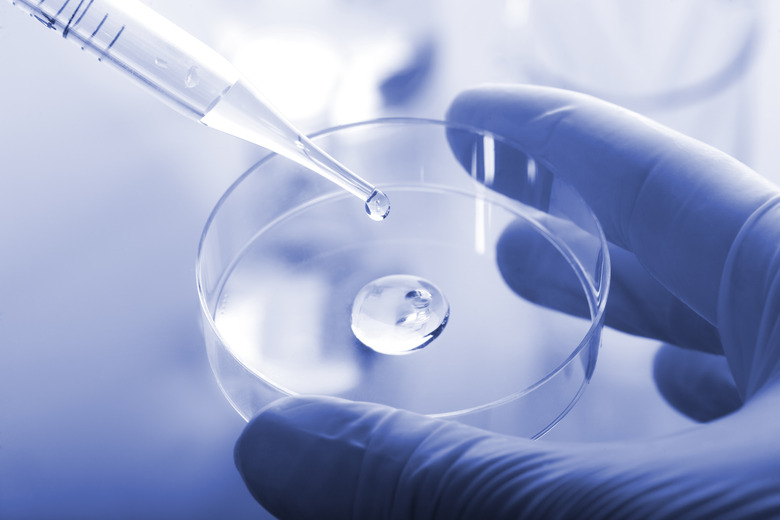What Does Acetone Alcohol Do To A Gram Stain?
The Gram stain is a differential staining procedure that shows which bacteria are Gram-positive or Gram-negative based on their stain color. Acetone alcohol is one reagent used in this process to provide the color differentiation. Gram-positive bacteria have a thick peptidoglycan layer and stain purple, while Gram-negative microorganisms have a little to no peptidoglycan layer and stain pink.
Primary Stain-Crystal Violet
Primary Stain-Crystal Violet
Once a slide of bacterial sample is prepared, crystal violet is used to stain the sample first. At this point both Gram-positive and Gram-negative bacteria will appear purple. Usually the crystal violet is applied on the slide for 30 seconds before washing off any excess stain with water. The crystal violet can adhere a little to the peptidoglycan layers so not all the primary stain will be washed off with the water.
Mordant-Iodine
Mordant-Iodine
Iodine is then added to the sample for one minute. It acts as a mordant, which serves to fix dyes in a staining process. Iodine performs this function by binding to the crystal violet and creating an insoluble complex which adheres much better to the thick peptidoglycan layer found in Gram-positive bacterial cells than just the crystal violet alone. There is not a washing step with water after adding the iodine.
Decolorizer-Alcohol
Decolorizer-Alcohol
Either acetone or ethyl alcohol can be used as the decolorizing agent. The alcohol dissolves lipids found in the outer cell membrane of Gram-negative bacteria, allowing the crystal violet-iodine complex to leak out of the thinner peptidoglycan layer. The alcohol is added for 10 to 20 seconds; it is poured on the slide until all the iodine is washed away and the run-off is colorless. At this point in the Gram stain process, Gram-negative bacteria are colorless while Gram-positive bacteria still retain the crystal violet. Once finished the slide needs to be rinsed with water to stop the decolorizing effect.
Counterstain-Safranin
Counterstain-Safranin
Safranin is then added to increase the visibility and contrast to the colorless Gram-negative bacteria. The stain makes these bacteria appear pink under the microscope. Since the stain is added to the whole sample, it also stains Gram-positive bacteria as well, but the darker of the crystal violet hides the lighter safranin pink color. Once the slide sample has been flooded with safranin for about a minute, water is used to wash off any excess stain that did not adhere to the bacterial cells.
References
- "Microbiology Lab Manual TCCD South Campus"; Barry Chess et. al.; 2009
Cite This Article
MLA
Spear, Marcia. "What Does Acetone Alcohol Do To A Gram Stain?" sciencing.com, https://www.sciencing.com/acetone-alcohol-do-gram-stain-8731379/. 13 March 2018.
APA
Spear, Marcia. (2018, March 13). What Does Acetone Alcohol Do To A Gram Stain?. sciencing.com. Retrieved from https://www.sciencing.com/acetone-alcohol-do-gram-stain-8731379/
Chicago
Spear, Marcia. What Does Acetone Alcohol Do To A Gram Stain? last modified March 24, 2022. https://www.sciencing.com/acetone-alcohol-do-gram-stain-8731379/
